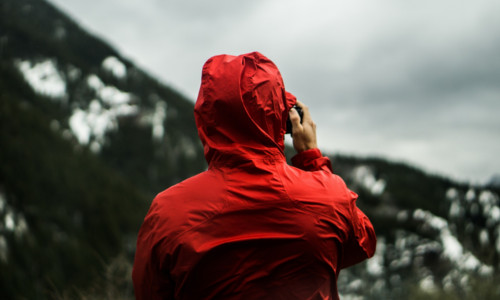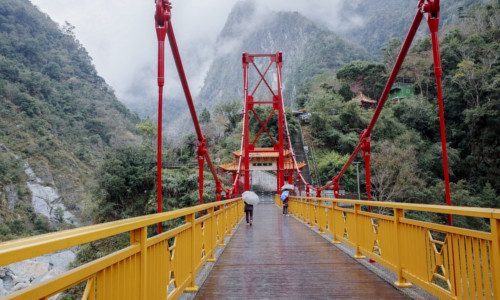Make a Choice: Water Resistant or Water Proof Jacket
Author

Chris shares his passion for cycling, hiking, skiing, and climbing from Buxton, in the Peak District. As a blogger for Outdoor Look, Chris shares outdoor tips and indoor tricks to help you get the most out of your time spent outside. When he's not out adventuring he's making videos or trying to keep up with his 4-year-old son.
Have you been throwing around the terms 'waterproof' and 'water-resistant' unabashedly, without knowing what they mean? Although the terms are quite similar when used to refer to a jacket, these two words can actually have very different meanings.

It is not pleasant to get caught in the midst of a torrential downpour while wearing a jacket which is not totally waterproof. Neither is it wise to splurge extra cash on a waterproof jacket, when your needs would actually be served perfectly well by a cheaper water-resistant one. Understanding the meanings of these two terms can go a long way in helping you choose the right jacket.
How a Water-Proof Jacket is Different from a Water-Resistant Jacket
If you ask me, I can tell from my personal experience that the two are very different. When I started hiking, I bought a water-resistant jacket. It served me well for quite a long time, till it started raining. Each day I went outdoors, I came home drenched. I wondered why my trusted jacket was letting me down, until I learned from my friend that it was not fully water-proof. He told me that only jackets made from non-porous material like rubber are 100% waterproof. All other jackets can only be water-resistant and hence, are not suitable to be worn during a downpour. However, as non-porous materials are not particularly comfortable to wear, it is always wise to consider the trade-off between waterproofing and comfort before making a selection.
Difference between the Make of Water Resistant and Water Proof Jacket
Water-resistant jackets and pants will generally have a durable water repellent finish (DWR) on the exterior, which keeps you dry in light showers. On the other hand, waterproof jackets will instead have a 'waterproof breathable membrane'; i.e. laminate or another similar waterproof technology, in order to keep you dry with 100% assurance. In some waterproof jackets, the seams are sealed, which safeguards the jackets in an even better way.
Sealed Seams
Sealed seams are a way to add extra waterproofing strength to your jacket by ensuring that water can't get in through the tiny holes at each of its seams. They come in two types: "critically seam sealed" and "fully seam sealed". With a “critically seam sealed" jacket, only the upper body of the garment has sealed seams, and therefore there is still some vulnerability to leakage. "Fully seam sealed" means that all seams in the jacket are sealed, for maximum water tightness.

The seams can be sealed in two ways:
1. “Taped seams" are sealed with a waterproof tape that provides a layer of protection from moisture.
2. "Welded seams" are seams that are joined with glue or sonic bonding to join pieces of fabric without the weight or vulnerability of stitched seams.
Waterproof Ratings
You can check whether the jacket is waterproof or not by looking at its waterproof rating, which is generally determined by submitting the jacket to a 'static-column test'. In this test, a tube with a diameter of 1 inch is placed on top of the fabric and filled with water slowly. The moment any leakage occurs, the water's height is noted and becomes its waterproof rating - e.g. 5,000mm or 20,000mm.
Decision Time
Your choice completely depends on the activities that you will be performing while wearing the jacket. If you're purchasing a jacket just for skiing or snowboarding, you'll need a water-resistant jacket, and you might be unnecessarily weighed down and restrained by a bulkier waterproof jacket. On the other hand, if you're buying the jacket specifically for rainy days, you'll want the extra protection offered by a fully waterproof jacket. Of course, in an ideal world it would be great to own both - so if you have the money, go for it! It's not accurate to say that waterproof jackets are 'better' or 'superior' to water-resistant ones - it's really more that they serve quite different purposes as items of clothing.
Author

Chris shares his passion for cycling, hiking, skiing, and climbing from Buxton, in the Peak District. As a blogger for Outdoor Look, Chris shares outdoor tips and indoor tricks to help you get the most out of your time spent outside. When he's not out adventuring he's making videos or trying to keep up with his 4-year-old son.
- Speed Up Your Post-Hike Recovery with These 6 Essential Tips
- Cycling through Tranquil Roads and Coastal Views on the Isle of Wight
- The Essential Guide to Hiking Safety: 5 Tips Every Hiker Should Know
- Run Smart, Run Strong: Your Guide to Injury-Free Running
- Embrace Biking: Essential Tips for Beginners
Categories
- Sport (28)
- Product Reviews (3)
- Team Outdoor Look (7)
- Mike Wild (2)
- Mike Payton (2)
- Suse Hammond-Pears (3)
- Snowboarding (12)
- Latest Offers (105)
- Shop Talk (1)
- Competitions (7)
- Walking (413)
- Lifestyle Fashion (8)
- Travel (86)
- Kit Guides (176)
- Workwear Clothing (6)
- Safety Workwear (4)
- Health/Fitness (289)
- Skiing (91)
- Great Outdoors (1316)
- Cycling (92)
- January 2025
- December 2024
- November 2024
- October 2024
- September 2024
- August 2024
- July 2024
- June 2024
- May 2024
- April 2024
- March 2024
- February 2024
- January 2024
- December 2023
- November 2023
- October 2023
- September 2023
- August 2023
- July 2023
- June 2023
- May 2023
- April 2023
- March 2023
- February 2023
- January 2023
- December 2022
- November 2022
- October 2022
- September 2022
- August 2022
- July 2022
- June 2022
- May 2022
- April 2022
- March 2022
- February 2022
- January 2022
- December 2021
- November 2021
- October 2021
- September 2021
- August 2021
- July 2021
- June 2021
- May 2021
- April 2021
- March 2021
- February 2021
- January 2021
- December 2020
- November 2020
- October 2020
- September 2020
- August 2020
- July 2020
- June 2020
- May 2020
- April 2020
- March 2020
- February 2020
- January 2020
- December 2019
- November 2019
- October 2019
- September 2019
- August 2019
- July 2019
- June 2019
- May 2019
- April 2019
- March 2019
- February 2019
- January 2019
- December 2018
- November 2018
- October 2018
- September 2018
- August 2018
- July 2018
- June 2018
- May 2018
- April 2018
- March 2018
- February 2018
- January 2018
- December 2017
- November 2017
- October 2017
- September 2017
- August 2017
- July 2017
- June 2017
- May 2017
- April 2017
- March 2017
- February 2017
- January 2017
- December 2016
- November 2016
- October 2016
- September 2016
- August 2016
- July 2016
- June 2016
- May 2016
- April 2016
- March 2016
- February 2016
- January 2016
- December 2015
- November 2015
- October 2015
- September 2015
- August 2015
- July 2015
- June 2015
- May 2015
- April 2015
- March 2015
- February 2015
- January 2015
- December 2014
- November 2014
- October 2014
- September 2014
- August 2014
- July 2014
- June 2014
- May 2014
- April 2014
- March 2014
- February 2014
- January 2014
- December 2013
- November 2013
- October 2013
- September 2013
- August 2013
- July 2013
- June 2013
- May 2013
- April 2013
- March 2013
- February 2013
- January 2013
- December 2012
- November 2012
- October 2012
- September 2012
- August 2012
- July 2012
- June 2012
- May 2012
- April 2012
- March 2012
- February 2012
- January 2012
- December 2011
- November 2011
- October 2011
- September 2011
- August 2011
- May 2010
- April 2010
- March 2010
- February 2010
- January 2010
- November 2009
- October 2009
- September 2009
Submit a Comment